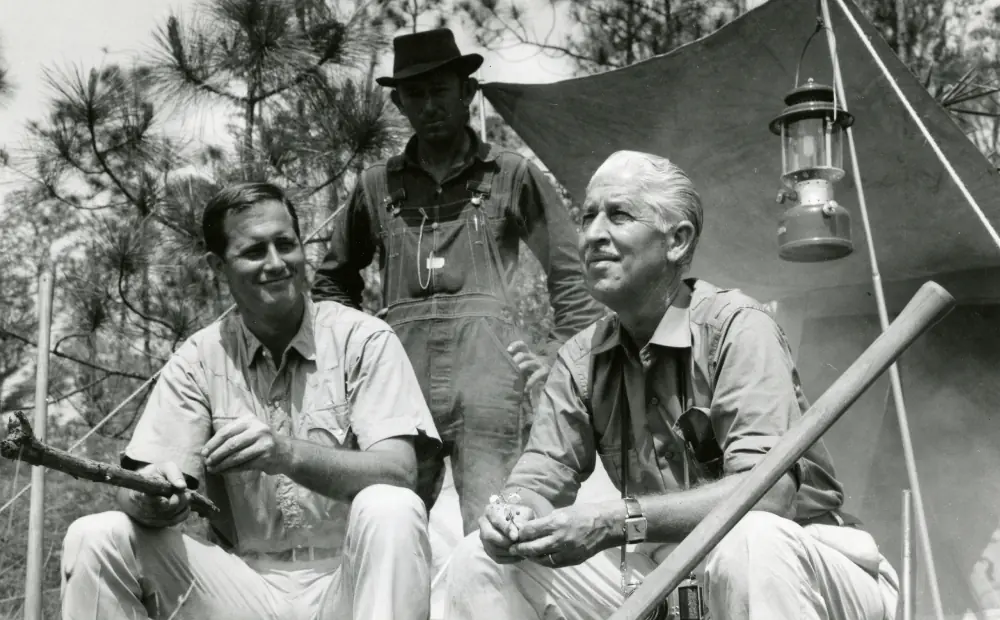0:01
Today I'm joining an important scientific mission.
0:04
We're counting the population of the endangered N Atlantic right whale on their migration N.
0:11
But first I have to take a literal crash course for an emergency water landing.
0:18
My instructor, Alex Chapman, guides me through this important safety course.
0:23
I'm going to flip you upside down.
0:25
You got to push out the window, unbuckle and get yourself out.
0:28
Well, I think I'm ready for that.
0:30
It sounds breathtaking.
0:32
A little bit, yeah.
0:39
This is one of the most nerve wracking things I've ever done.
0:44
But conservation isn't always risk free.
0:47
This is what it takes to help save a species.
0:49
Here we go straight in.
1:12
I got a little panicky at the end there.
1:14
It's a stressful situation.
1:15
Doing that does happen.
1:16
You know, you've got the skills, you've got the knowledge to save yourself.
1:19
So I appreciate all that knowledge now and I'm looking forward to never having to use it.
1:27
Next up, Bedford, MA where I'm going to fly with an aerial patrol that keeps track of every single right whale swimming up the coast.
1:37
So obviously we have a 5th person with us today.
1:40
First time we've ever had a a guest aboard.
1:42
Are we ready to find some right whales today?
1:49
Bedford Tower Espinate Victor Alpha Holden, short one forward.
1:52
It won't be a straight up department.
1:54
That's my Victor Alpha tower, my 1 forklift takeoff, 1 forklift takeoff, Aspen a Victor Alpha.
2:02
Let's find spoils.
2:04
Oh, by the way, I am honored to be your first guest.
2:07
Whatever you're serving, you're part of the crew.
2:09
Now, what is the purpose of your survey?
2:13
So the purpose of the aerial surveys is to keep track of the different animals that come to this area.
2:19
We've been flying these surveys for a little over 10 years, so we've been able to build up a really robust timeline of how whales and other animals are using the water.
2:30
The Martha's Vineyard in Nantucket, there are 13 species of great whales, and they were all intensely haunted for centuries for their blubber.
2:43
North Atlantic right wheels swimming slowly close to the shore got their name because they were easy targets, the right whales to hunt, and they were nearly wiped out.
2:56
Even though they've been protected for nearly 100 years, they still face deadly threats, from ship strikes to entanglement in fishing gear.
3:09
I'll be enjoying this.
3:10
Can't wait to see my very first right whale.
3:13
Although these animals are huge, finding them in this gigantic channel between Martha's Vineyard and Nantucket is like trying to find a needle in a haystack.
3:25
Orla sees it first.
3:27
There it is.
3:28
It's coming up built up surface.
3:30
Yeah, just barely.
3:34
Then I spot something.
3:36
A dark silhouette breaches the water's surface.
3:38
It's a North Atlantic right whale.
3:42
We were really lucky.
3:43
Normally it takes us a little longer to find whales.
3:47
More appear, and we find ourselves circling a magnificent pod.
3:55
Look at that, there was probably about 15 or 20 whales all spread out and feeding.
4:02
So we spent about an hour circling.
4:05
We did see some juvenile animals and we definitely saw an adult female named Chimenea that we were able to recognize in the plane.
4:14
These aerial surveys aim to inform conservation and policy decisions.
4:19
I'm in awe of these creatures and also worried about their future.












